Pea gravel path ideas – 5 beautiful garden walkways
Designers say you can do a number of things to dress up a pea gravel path
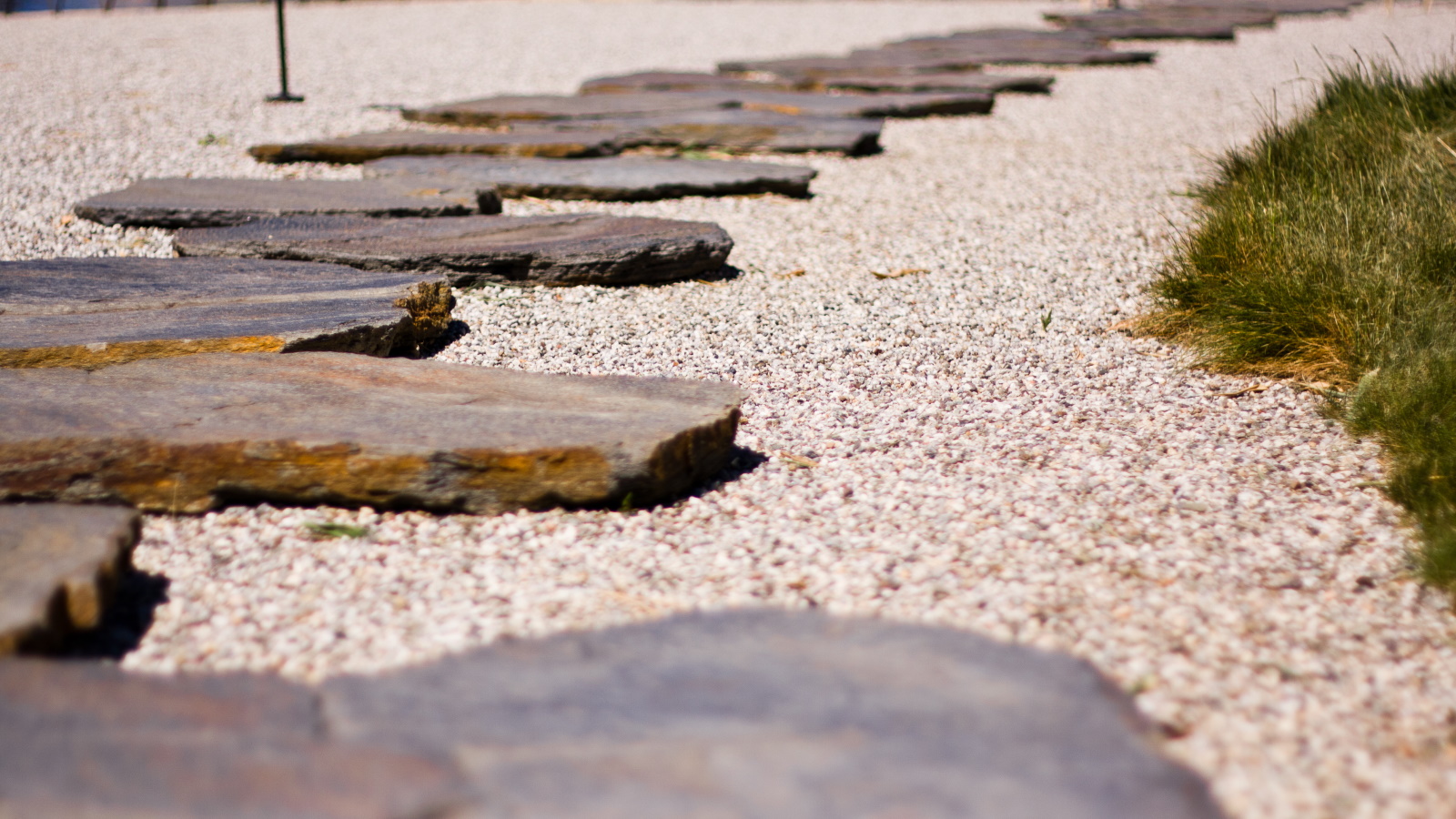

Sometimes it can be overwhelming to decide how you want your backyard to look and things as simple as a garden path can take some time to perfect. There are so many different ways to create a walkway through your yard, from slabs to walkable plants, the options are endless.
If you haven't already considered using pea gravel for your garden path, it's one of the most versatile materials to use. It's made up of small, rounded stones that tend to be the size of peas - hence its name. Although, you can get pea gravel of different sizes. Unlike having to clean pavers, pea gravel is much more manageable as it hides dirt more easily. It can also be used to fill up different areas of your yard, not just paths, and some people even choose it for their driveway.
I've spoken to landscape design experts to find out more about using pea gravel in the yard and they shared the biggest pea gravel trends and how to achieve beautiful looks with it.
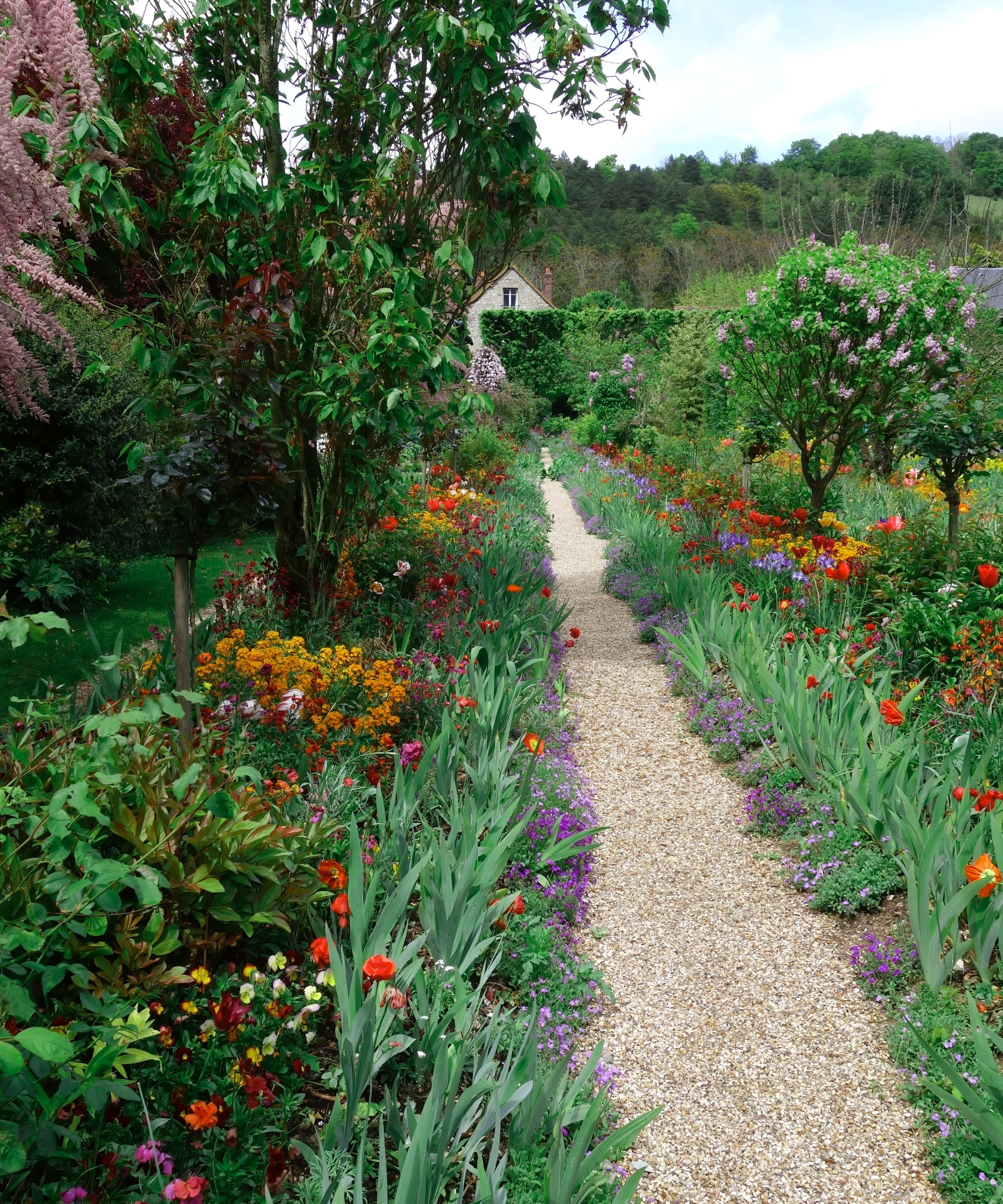
5 pea gravel path ideas
When it comes to garden path design rules, it's all about creating a path that suits your yard's landscape, and your style, and serves a purpose. Designers say that pea gravel can be adopted in so many ways and it can be used in nearly every backyard. Not sure how to use it in your space? Discover inspiring pea gravel path ideas below.
1. Experiment with different color gravel
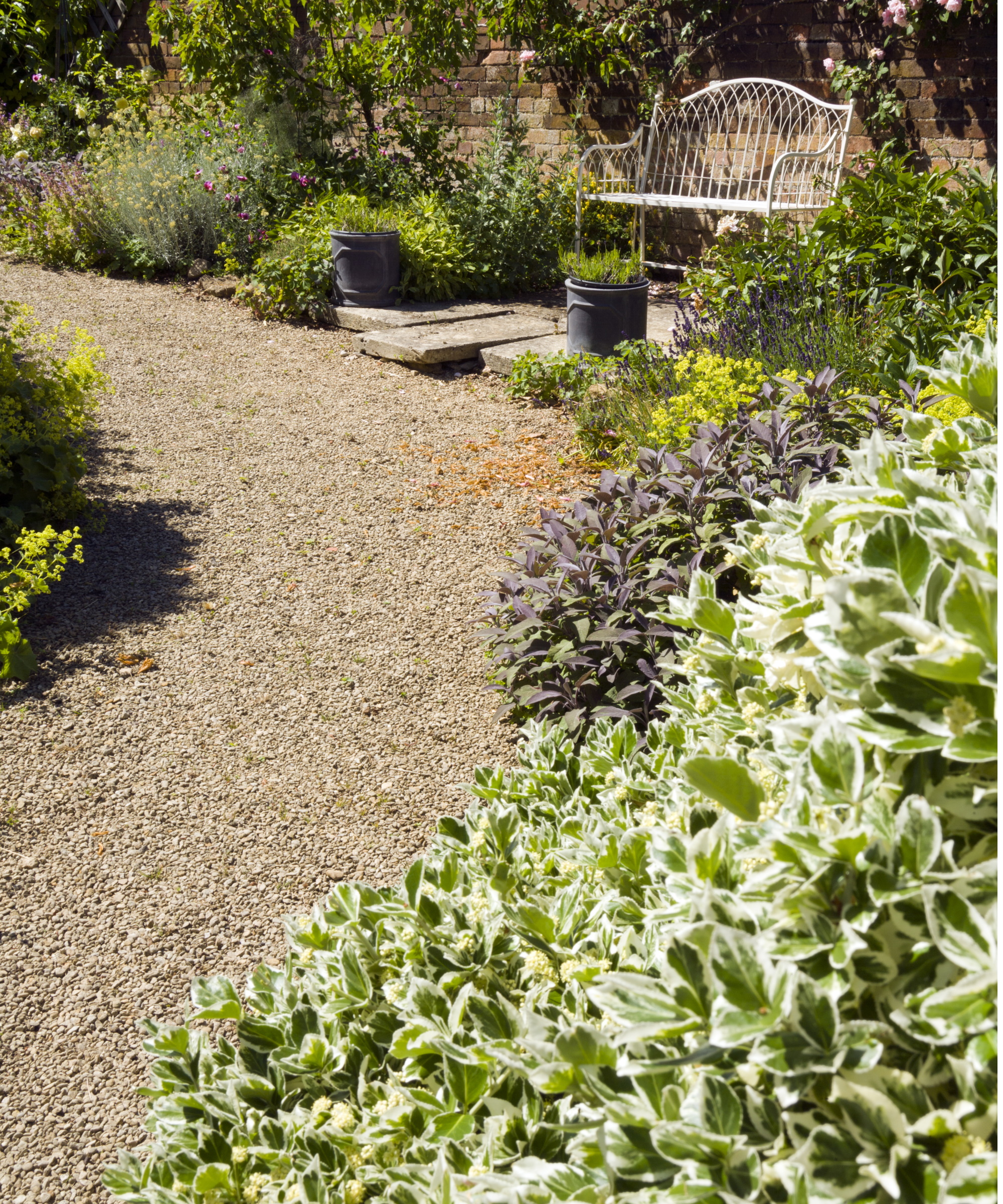
One of the best things about pea gravel is that it's available in a whole range of earthy colors. From white to tan colors like above, and even black and gray.
'Gravel comes in many colors so you can choose the right one for you,' says landscape design expert Leah Romero. 'Visit your local supplier in person to review all the options available to you,' she suggests.
You might want to choose the color of your pea gravel path based on the plants you grow around it. For example, pea gravel is often used when landscaping with succulents and cacti because it offers good drainage. Using a warm-toned pea gravel, like this pea gravel from Walmart, can enhance the desert feel of your garden path planting.
Or, if you're growing shrubs with dark foliage alongside your path, try using this white pea gravel from Amazon for a striking contrast.

With a degree from Louisiana State University's prestigious Robert Reich School of Landscape Architecture, Leah comes from an interdisciplinary background with experience in architecture, landscape architecture, and journalism. She is a civic-minded designer that creates contextually aware and responsible spaces. Leah is the chair of the board of the Zilker Botanical Garden Conservancy and is dedicated to serving her community by investing in its outdoor spaces. Leah is a PLA, Senior Associate at Word + Carr Design Group.
2. Opt for metal edging for a contemporary look
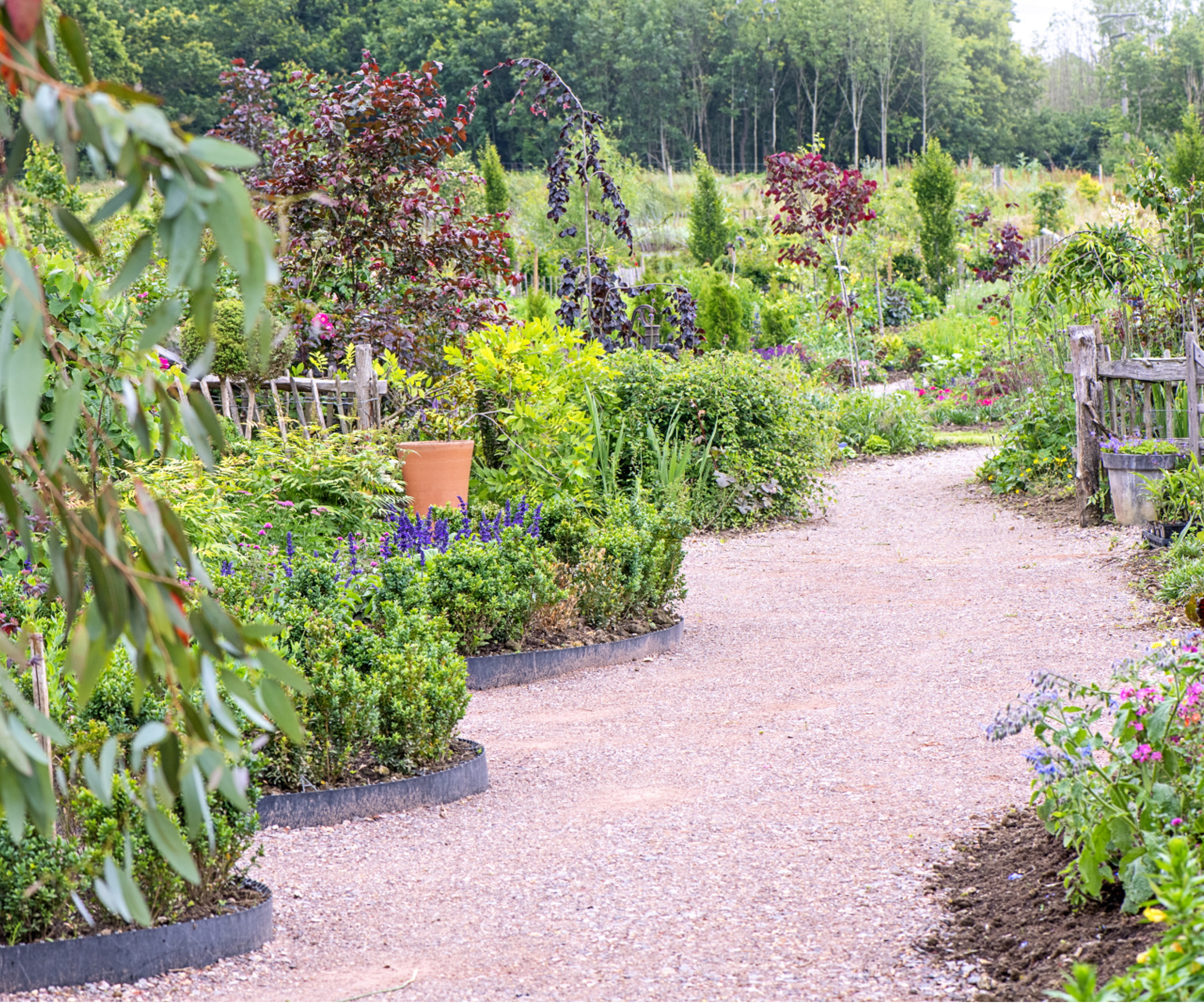
Edging is also important when creating your pea gravel path. This will help line the path and maintain the integrity of its shape. Plus, garden edging can help keep the stones in place.
'Metal edging is ultra-modern and durable. What I love about metal edging is the rust color it can turn when exposed to the elements, which gives it a cool weathered look,' says Marek Bowers, landscaping expert and founder of Bolder Green. 'However, it can be a bit more expensive than other choices.'
There are lots of metal edging ideas to explore. Some metals, like steel and aluminium, will withstand weather better than iron, which will rust when exposed to rain. However, as Marek notes, rusting over time can give metal edging a unique look. You can even purchase edging that already has a rusted color, like this pre-rusted steel edging from Amazon.
'When choosing your edge material, consider your home's overall aesthetic,' says Leah. 'Steel plate edging provides a cleaner look for a more contemporary home for example.'

Marek is a sustainable landscaper and an expert on California and Colorado low-water rebates. Marek's website, Bolder Green, is a guide to eco-friendly gardening. Through his articles on drought-tolerant landscaping and xeriscaping, readers will learn how to design stunning gardens that conserve water and support wildlife, all while adding beauty to their outdoor spaces.
3. Incorporate immersive planting
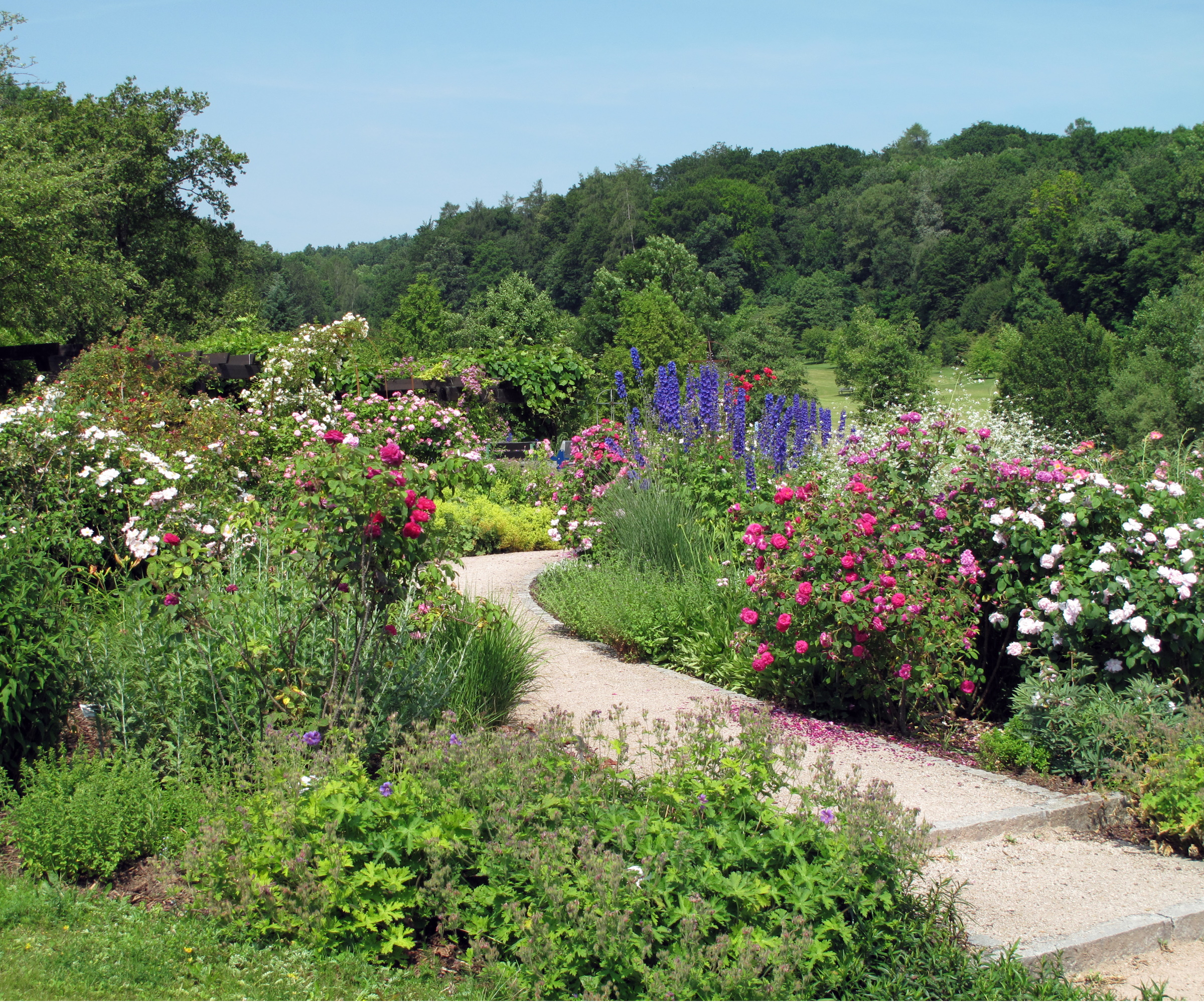
Garden paths not only serve the purpose of guiding you through a yard, but they can also be a vehicle to enjoy the surrounding planting. By choosing a variety of plants that spill over into the garden path, you can create a feeling of being immersed in nature.
Choose from the best evergreen shrubs and best trees for privacy to create an enclosed feeling on your pea gravel path.
You can even plant a flower bed alongside your garden path to add some color and seasonal interest as you walk through - try lining up multiple of these steel raised beds from Amazon.
There is also an opportunity to add a pergola over your garden path and use fragrant garden plants that climb to make this area of your yard smell nice.
4. Use stone edging for a classic appeal

Another pea gravel edging option is to use stone. While metal edging provides a direct contrast to pea gravel, stone edging provides a more united look where the edging and path blend together nicely.
'More traditional homes might call for brick or stone edging,' notes Leah. This is a good option to complement naturalistic planting in your yard, where you don't want to draw too much attention to hard landscaping features.
'Natural stone edging offers a classic look. It’s very durable, but the drawback is that the material is heavy,' says Marek. 'It can be a lot of work to have that much heavier material delivered and then setting the brick or stones in place.'
Just like different pea gravel colors, you can choose different stone edging colors. You can also get faux stone edging which is much lighter and easier to install, like this faux stone edging from Amazon.
5. Create a winding path
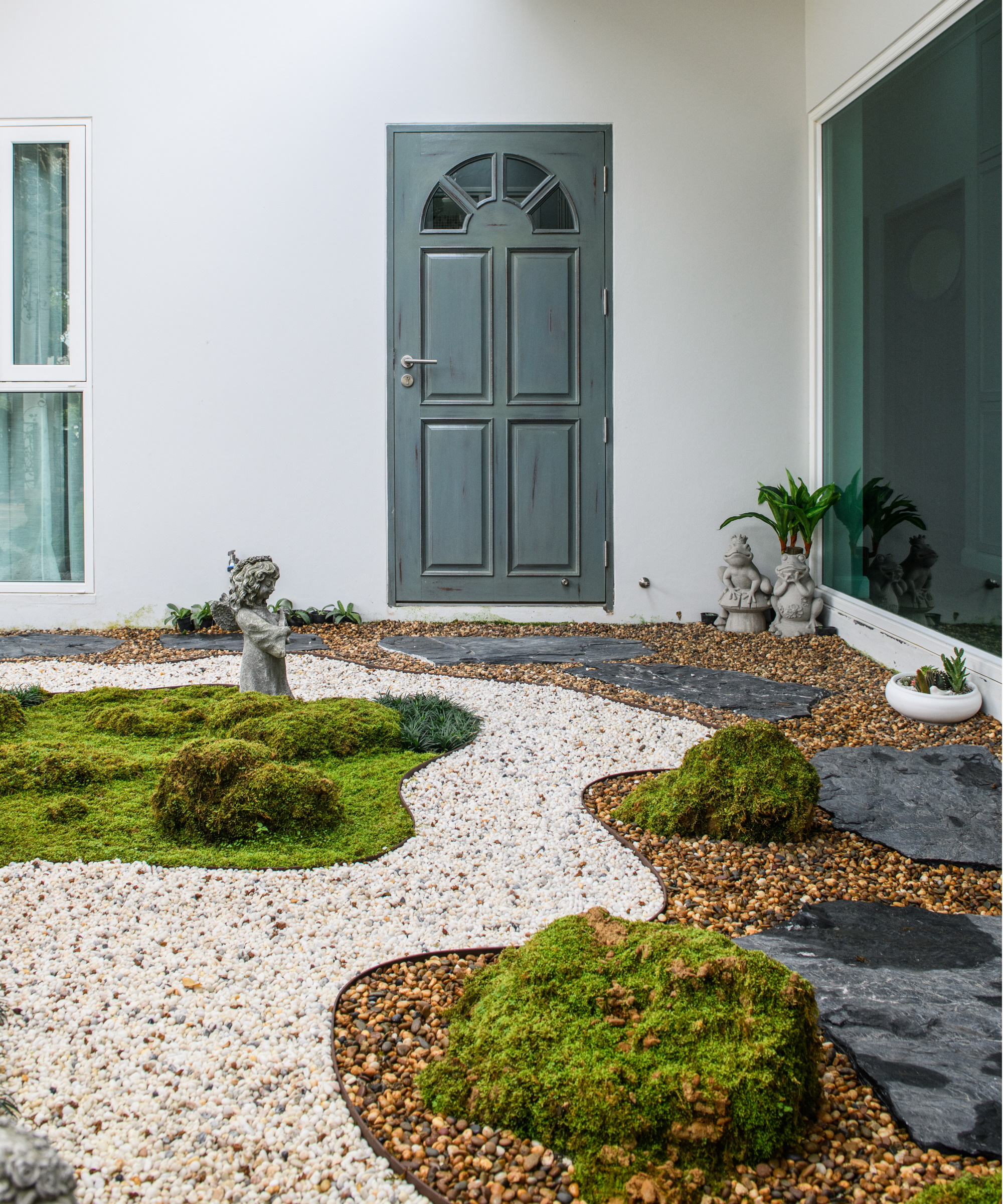
You also have to consider the shape of your pea gravel path. Largely, this will depend on the purpose of your path and where you need it to lead from and lead to.
Nevertheless, choosing to guide your path in a winding direction can be much more exciting than a straight path. It can have a whimsical feeling about it, especially with pea gravel, and works perfectly with immersive planting on either side of the path.
This can also be used to direct any visitors to your backyard to explore each part of your planting, winding around different garden features and through different garden rooms.
If you do opt for a unique path shape, make sure to light your garden path to make it easier to follow as it becomes darker.
FAQs
What do you put underneath pea gravel?
It's important to have a flat and secure layer beneath pea gravel if you intend to make it walkable.
'I recommend installing a four-inch thick layer of compacted road base below your pea gravel. Top it with a one-inch thick layer of the gravel of your choice,' advises landscape design expert Leah Romero. 'The road base helps to create a walkable and drivable surface that you won't sink into.'
It can also be wise to put something in place to stop weeds. 'Install weed barrier fabric, available at Amazon, beneath the pea gravel to prevent weeds from growing up through the path,' says Marek Bowers, landscaping expert and founder of Bolder Green
Pea gravel is among the best materials you can use for your garden path or driveway because of its versatile nature and ability to stay looking pristine. Of course, over time your pea gravel will capture dirt and it's a good idea to periodically rake it to keep it looking clean and tidy it up. Pea gravel can be used in lots of places in your yard, not just pathways, and you can even make a gravel garden with it.
Sign up to the Homes & Gardens newsletter
Design expertise in your inbox – from inspiring decorating ideas and beautiful celebrity homes to practical gardening advice and shopping round-ups.

Tenielle is a Gardens News Writer at Homes & Gardens. She holds a qualification in MA Magazine Journalism and has over six years of journalistic experience. Before coming to Homes & Gardens, Tenielle was in the editorial department at the Royal Horticultural Society and worked on The Garden magazine. As our in-house houseplant expert, Tenielle writes on a range of solutions to houseplant problems, as well as other 'how to' guides, inspiring garden projects, and the latest gardening news. When she isn't writing, Tenielle can be found propagating her ever-growing collection of indoor plants, helping others overcome common houseplant pests and diseases, volunteering at a local gardening club, and attending gardening workshops, like a composting masterclass.
-
 Kris Jenner's favorite air fryer, the Ninja Crispi, is the perfect small kitchen solution – it deserves a place on the most compact of countertops
Kris Jenner's favorite air fryer, the Ninja Crispi, is the perfect small kitchen solution – it deserves a place on the most compact of countertopsKris approves of this compact yet powerful air fryer, and so do our own kitchen appliance experts, praising it for its multifunctionality
By Hannah Ziegler Published
-
 Ina Garten's storage pantry is an insightful window into all of the best cookware used by the chef – and it's easy to recreate on your kitchen shelves from $48
Ina Garten's storage pantry is an insightful window into all of the best cookware used by the chef – and it's easy to recreate on your kitchen shelves from $48The beautiful dishware in The Barefoot Contessa's Hamptons pantry showcases the tools she uses most often to cook – this is exactly how you replicate it
By Sophie Edwards Published